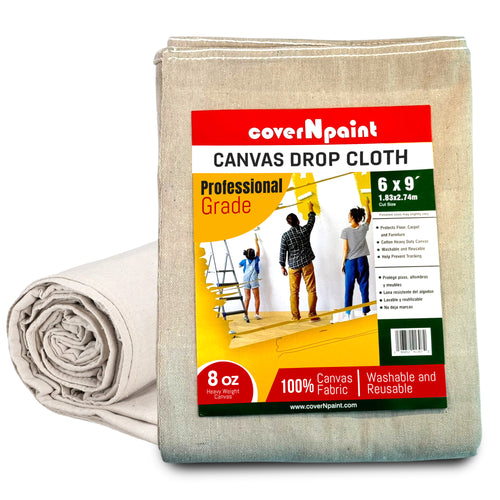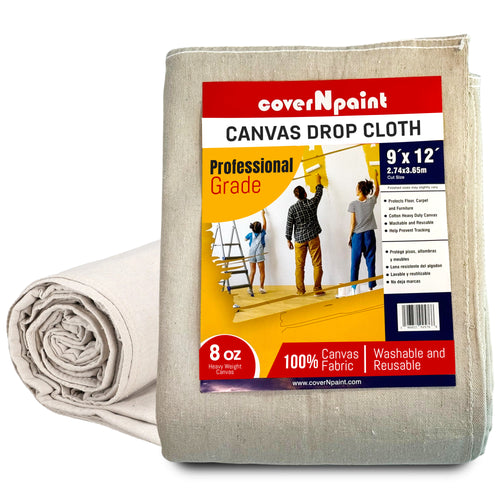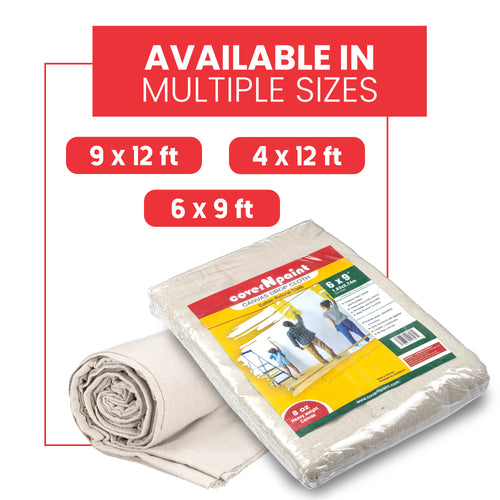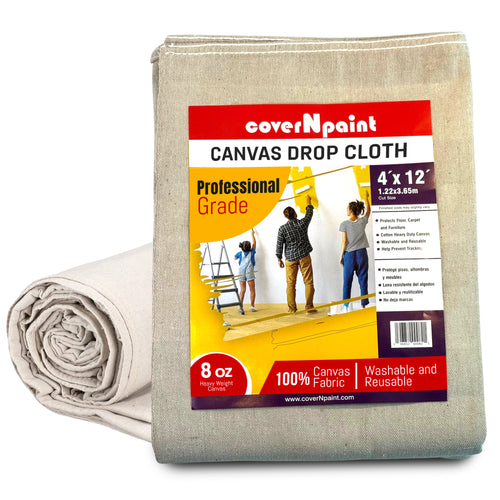When it comes to painting—whether it’s a home renovation, a commercial job, or a small DIY project — paint tarps and painters drop cloths play a critical role. They protect floors, furniture, and surfaces from paint splatters and stains, ensuring a clean and professional finish.
But paint tarps weren’t always as advanced as they are today. Over the years, they have evolved from heavy canvas drop cloths used by professional painters to lightweight, synthetic materials engineered for efficiency and safety.
This article explores the evolution of paint tarps, highlighting their materials, transformations, and the innovations that make them indispensable in modern painting.
Early Beginnings: The Rise Of Canvas Drop Cloths
Before modern synthetic materials existed, canvas drop cloths dominated painting sites. Canvas, woven from natural cotton fibers, offered durability and absorbency unmatched by any alternative at the time.
Why Canvas Was Ideal
-
Durability: Withstood heavy traffic, paint spills, and repeated washing.
-
Absorbency: Captured wet paint without spreading it to surrounding areas.
-
Reusability: Could be folded, stored, and reused for multiple projects.
Painters trusted canvas paint tarps for decades because they combined strength with sustainability. In many ways, canvas became the industry’s gold standard—setting the foundation for future innovations.
Mid-Century Shifts: The Era Of Plastic And Paper Tarps
As home improvement became popular in the mid-20th century, the demand for affordable, disposable protection materials grew. This led to the introduction of plastic paint tarps and paper drop cloths, which were inexpensive and easy to dispose of after use.
Benefits Of Plastic Paint Tarps
-
Waterproof barrier: Prevented liquid paint from seeping through.
-
Lightweight and portable: Ideal for quick, small-scale projects.
-
Low cost: Affordable for homeowners who painted occasionally.
Despite these advantages, plastic tarps had drawbacks. They were slippery, tore easily, and weren’t environmentally friendly. Professional painters still preferred canvas drop cloths for safety and reusability—qualities that disposables couldn’t match.
If you’re interested in learning how professionals prevent slipping hazards when working with tarps, explore our related article on Painters Drop Cloth Safety Guide: Preventing Slips, Trips, and Falls.
Modern Advancements: Combining Tradition And Technology
By the late 20th century and into the 21st, manufacturers began combining the best qualities of canvas and synthetic materials to create hybrid paint tarps. These advanced designs offered professional performance with improved safety and practicality.
Common Modern Types Of Paint Tarps
-
Poly-Backed Canvas Tarps: Canvas on top for absorbency, polyethylene backing underneath for waterproofing.
-
Paper-Poly Tarps: A lightweight, economical option combining paper absorbency with plastic protection.
-
Rubberized Tarps: Added traction to prevent slips—ideal for professional workspaces.
-
Reinforced Plastic Tarps: Multi-layered plastic with tear-resistant fibers for extended durability.
These innovations transformed how both contractors and homeowners approach painting, balancing durability, eco-friendliness, and ease of use.
Eco-Friendly Innovations And Sustainability
Modern users are increasingly concerned with sustainability. Unlike disposable plastics, canvas paint tarps can be reused for years, making them an environmentally responsible choice.
Why Canvas Still Matters Today
-
Reusable and washable: Reduces landfill waste.
-
Biodegradable fibers: Cotton decomposes naturally.
-
Long-term value: Cost-effective over multiple projects.
Some manufacturers are now producing eco-enhanced paint tarps—using recycled cotton, organic dyes, or biodegradable coatings—to meet both professional standards and environmental goals.
The Role Of Paint Tarps In Professional And DIY Settings
Whether you’re a contractor painting a commercial building or a homeowner refreshing a living room, choosing the right paint tarp affects both quality and safety.
For Professionals
-
Canvas or poly-backed tarps are ideal for high-volume projects where durability and spill resistance are crucial.
-
Slip-resistant tarps improve on-site safety, especially on smooth surfaces.
For DIY Enthusiasts
-
Lightweight, affordable plastic or paper tarps are suitable for single-room or furniture projects.
-
Smaller paint drop cloths can be used for quick touch-ups or outdoor furniture refinishing.
This diversity of materials allows painters to choose the perfect balance between cost, convenience, and performance.
The Future Of Paint Tarps
As technology progresses, the next generation of paint tarps is expected to integrate smarter materials and eco-driven design. Industry experts predict advancements such as:
-
Self-cleaning coatings that repel paint and dust.
-
Recycled polymer blends for sustainable production.
-
Grip-enhanced surfaces to improve floor traction.
-
Modular systems with pre-fitted edges for easy setup.
These innovations reflect how even a simple protective tool continues to evolve with changing user needs and environmental awareness.
A Curiosity-Building Note
The evolution of paint tarps proves that even the most ordinary painting tool has an extraordinary history. What many painters don’t realize is that small adjustments—like choosing the right weave or backing—can significantly improve performance and safety. coverNpaint USA has shared expert insights into these innovations, inspiring both professionals and DIYers to rethink how a simple tarp can redefine the painting experience.
Key Takeaways From The Evolution Of Paint Tarps
-
Canvas remains timeless: The durability and reusability of canvas still outperform disposable alternatives.
-
Hybrid designs dominate today’s market: Combining absorbent and waterproof layers provides the best of both worlds.
-
Sustainability drives innovation: Manufacturers are focusing on biodegradable and recycled materials.
-
Safety is now integral: Anti-slip features and reinforced edges prevent common painting accidents.
FAQs
Q1: What is the difference between paint tarps and painters drop cloths?
Both serve the same purpose—protecting surfaces—but paint tarps can include various materials like plastic or rubberized backing, while drop cloths are traditionally canvas.
Q2: Are paint tarps waterproof?
Yes, many modern paint tarps feature waterproof or poly-backed layers, making them ideal for both indoor and outdoor use.
Q3: Can I wash and reuse a paint tarp?
Canvas and poly-backed tarps can be washed and reused many times, but lightweight plastic tarps are typically disposable.
Q4: What’s the safest material for indoor painting?
Canvas or rubber-backed painters drop cloths are safest, as they provide traction and prevent slipping.
Q5: How can I make my paint tarps last longer?
Clean them after every use, store them in a dry place, and avoid folding when wet to prevent mildew and tearing.













